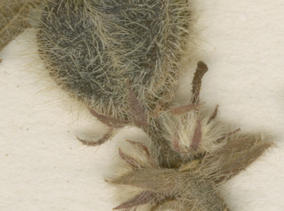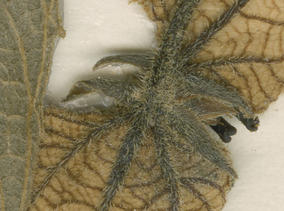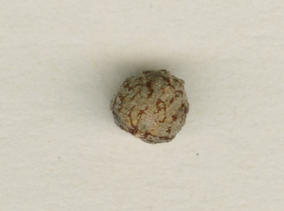You are here
Neotropical Euphorbiaceae s.l.
Dalechampia
SUMMARY
Scandent shrubs, climbers or perennial herbs, monoecious. Exudate absent*. Unarmed*. Indumentum present, hairs simple, less often stinging. Stipules free*, simple, unlobed, entire *, not spine-like*, not leaf-like*, without glands. Leaves distributed evenly along stem, alternate, simple or compound, lobed, margin toothed or entire, base symmetrical, leaf blade not pellucid-punctate, glands or (more usually) stipel-like appendages on leaf base or petiole apex; venation pinnate or with 3 – 7 strong veins from base; domatia absent*. Petiole present, without swellings or bends at base or apex*. Inflorescence with axis (sometimes obscure), axillary or terminal, complex, the whole inflorescence with the appearance of a single flower, capitate, bisexual but comprised of unisexual parts, 2-bracteate; bracts large, conspicuous, leaf-like, equal or almost so, sessile, stipulate, entire, toothed or 3-lobed, green, pink, white or yellow; male flowers (7) 8–12 (20) in each inflorescence with an adjacent mass of fused resin- or wax-encrusted bracts and/or sterile flowers; female flowers 1–3, basal; pedicels present, articulated or not. Male flowers: sepals 4–6, valvate, partially fused, greenish; petals 0; disc 0; stamens (8) 10–30 (100), partially fused; anther with conspicuous modification; pistillode absent. Female flowers: sepals 5–12, imbricate, free or partially fused, enlarged relative to other floral parts, entire to much divided, glandular or not, often later accrescent and enclosing the fruit, greenish; petals 0; disc 0; ovary locules 3–4, ovules per locule 1; styles completely fused into an elongate column (stigmas may be free), entire or lobed at tip, styles or stigmas flat or not, surface smooth*; staminodes absent. Fruit dehiscent, not sculptured*, greenish to brown; seed without appendage, covering or membraneous layer*, not fleshy; embryo flat, not minute, cotyledons leaf-like.
An asterisk * indicates a state has been assumed but not yet confirmed.
About 110 spp., mostly neotropical.






